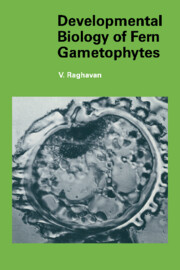1 - Introduction
Published online by Cambridge University Press: 11 September 2009
Summary
Extant ferns comprise a group of about 12 000 species of plants widely distributed throughout the world in many habitats and niches. As wide as their distribution is their range in size, with extremes such as the small water ferns with leaves less than 1 cm long and the giant tree ferns which attain heights of almost 25 m and bear crowns of leaves 30 cm or more in diameter. In many contemporary systems of classification with which developmental botanists will feel comfortable, ferns are assigned to the group Pteropsida or Filicopsida. Members of this group along with those of Psilopsida, Lycopsida and Sphenopsida constitute a major division of the plant kingdom known as Pteridophyta (pteridophytes). A distinctive anatomical feature of pteridophytes, which they share with gymnosperms and angiosperms, is the presence of a vascular system in the plant body, but pteridophytes differ from the latter two divisions in lacking the seed habit (hence the name, seedless vascular plants, for the division). During their evolutionary past, pteridophytes have stabilized and almost perfected the vascular system for a seedless plant so much so that they are also designated as vascular cryptogams. Most pteridophytes, including ferns, are trapped into a life cycle in which they are constrained by some primitive features such as the production of motile sperm and the requirement for free water for fertilization.
- Type
- Chapter
- Information
- Developmental Biology of Fern Gametophytes , pp. 1 - 6Publisher: Cambridge University PressPrint publication year: 1989
- 1
- Cited by



